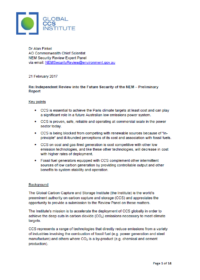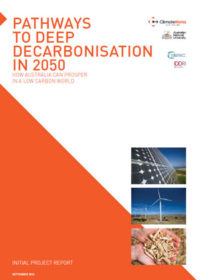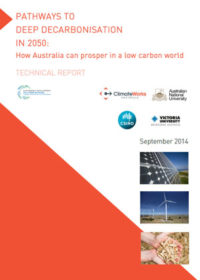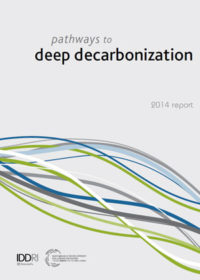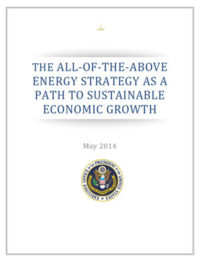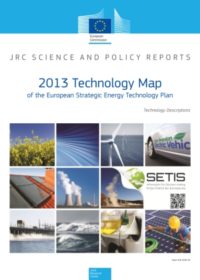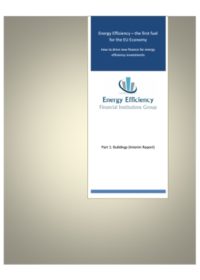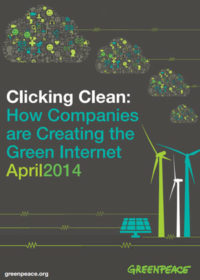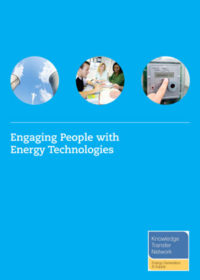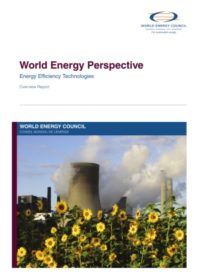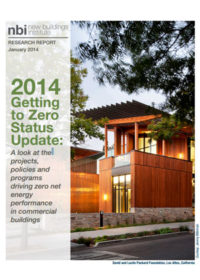Resources
Publications
Our publications, reports and research library hosts over 500 specialist reports and research papers on all topics associated with CCS.
View our Publication Library Disclaimer.
Filter by
Independent Review into the Future Security of the National Electricity Market – Preliminary Report
24th February 2017
Topic(s): Energy efficiency
In October 2016, in the wake of a major blackout in the state of South Australia, the Council of Australian Governments directed the country’s chief scientist, Dr Alan Finkel, to draft a blueprint for energy security in the National Electricity Market.
Consultation on this blueprint covers a broad range of issues facing the Australian electricity market, primarily centred around how to ensure the delivery of electricity that is clean, reliable and affordable. The review is taking place during a period of heightened political and community concern over electricity price increases, the exit of traditional coal generation, increasing penetration of intermittent forms of renewable power, and high degrees of carbon and policy risk which are inhibiting investment in other much needed technologies. Recommendations arising from this review will factor into a broader review of Australia’s climate policy to take place over 2017.
The Institute provided its submission to this review of the electricity market on 21 February 2017. It contains analysis demonstrating that CCS is necessary among a full suite of options in achieving a low emissions power grid at least cost, that it can complement intermittent sources of renewable power, and it is cost competitive with the full range of generation and energy storage options being considered.
Disclaimer
The content within the Global CCS Institute Publications, Reports and Research Library is provided for information purposes only. We make every effort and take reasonable care to keep the content of this section up-to-date and error-free. However, we make no claim as to its accuracy, currency or reliability.
Content and material featured within this section of our website includes reports and research published by third parties. The content and material may include opinions and recommendations of third parties that do not reflect those held by the Global CCS Institute.
Pathways to deep decarbonisation in 2050: how Australia can prosper in a low carbon world
23rd September 2014
Topic(s): Carbon capture use and storage (CCUS), Economics, Energy efficiency, Fuel switching, Nuclear energy, Renewables
Pathways to Deep Decarbonisation in 2050: How Australia Can Prosper in a Low Carbon World presents an illustrative deep decarbonisation pathway for Australia - just one of many possible pathways - developed using a combination of well-established modelling tools to identify feasible and least-cost options. The frame of reference for the analysis is that all countries decarbonise by 2050, consistent with the objective of limiting the increase in global mean surface temperature to 2°C in order to avoid dangerous climate change.
This initial project report shows that Australia can achieve net zero emissions by 2050 and live within its recommended carbon budget, using technologies that exist today (including carbon capture and storage), while maintaining economic prosperity. Major technological transitions are needed in some industries and many activities, but no fundamental change to Australia’s economy is required. Economic activity and Australian incomes keep rising. The economy grows by 150% to 2050, while net emissions fall to zero and energy sector emissions are reduced by more than four fifths.
This report is accompanied by the Technical Report which gives detail on assumptions, data, modelling tools and detailed results.
Disclaimer
The content within the Global CCS Institute Publications, Reports and Research Library is provided for information purposes only. We make every effort and take reasonable care to keep the content of this section up-to-date and error-free. However, we make no claim as to its accuracy, currency or reliability.
Content and material featured within this section of our website includes reports and research published by third parties. The content and material may include opinions and recommendations of third parties that do not reflect those held by the Global CCS Institute.
Pathways to deep decarbonisation in 2050: how Australia can prosper in a low carbon world. Technical report
23rd September 2014
Topic(s): Carbon capture use and storage (CCUS), Economics, Energy efficiency, Fuel switching, Nuclear energy, Renewables
This report presents the technical analysis supporting ClimateWorks’ Pathways to Deep Decarbonisation in 2050: How Australia Can Prosper in a Low Carbon World. It provides readers with details on assumptions, data, and modelling tools. This Technical Report provides detailed results and a discussion of limitations.
Disclaimer
The content within the Global CCS Institute Publications, Reports and Research Library is provided for information purposes only. We make every effort and take reasonable care to keep the content of this section up-to-date and error-free. However, we make no claim as to its accuracy, currency or reliability.
Content and material featured within this section of our website includes reports and research published by third parties. The content and material may include opinions and recommendations of third parties that do not reflect those held by the Global CCS Institute.
Pathways to deep decarbonization: 2014 report
19th September 2014
Topic(s): Carbon capture use and storage (CCUS), Economics, Energy efficiency, Fuel switching, Nuclear energy, Renewables
This 2014 report by the Deep Decarbonization Pathway Project (DDPP) summarises preliminary findings of the technical pathways developed by the DDPP Country Research Partners with the objective of achieving emission reductions consistent with limiting global warming to less than 2°C., without, at this stage, consideration of economic and social costs and benefits.
Disclaimer
The content within the Global CCS Institute Publications, Reports and Research Library is provided for information purposes only. We make every effort and take reasonable care to keep the content of this section up-to-date and error-free. However, we make no claim as to its accuracy, currency or reliability.
Content and material featured within this section of our website includes reports and research published by third parties. The content and material may include opinions and recommendations of third parties that do not reflect those held by the Global CCS Institute.
The all-of-the-above energy strategy as a path to sustainable economic growth
1st May 2014
Topic(s): Carbon capture use and storage (CCUS), Economics, Energy efficiency, Nuclear energy, Policy law and regulation, Renewables
The President of the United States has set out an aggressive All-of-the-Above strategy on energy. Some of the recent trends in the energy sector predate the Administration and stem from technological advances and risk-taking by American entrepreneurs and businesses, as well as from government-supported research and other public policies. The All-of-the-Above energy strategy supports these trends through environmentally responsible production of oil and natural gas. In addition, the Administration has advanced the growth of energy sources with low or zero carbon emissions through programs that support wind, solar, other renewables, and nuclear, and has also helped to reduce energy demand by promoting energy efficiency. The Administration is also supporting an ambitious program of carbon capture, utilization and storage for coal and natural gas power plants and for industrial facilities.
Disclaimer
The content within the Global CCS Institute Publications, Reports and Research Library is provided for information purposes only. We make every effort and take reasonable care to keep the content of this section up-to-date and error-free. However, we make no claim as to its accuracy, currency or reliability.
Content and material featured within this section of our website includes reports and research published by third parties. The content and material may include opinions and recommendations of third parties that do not reflect those held by the Global CCS Institute.
2013 technology map of the European Strategic Energy Technology Plan (SET-Plan): technology descriptions
9th April 2014
Topic(s): Carbon capture use and storage (CCUS), Energy efficiency, Fuel switching, Nuclear energy, Renewables
This publication is a Scientific and Policy Report by the Joint Research Centre of the European Commission. This fourth edition of the Technology Map of the European Strategic Energy Technology Plan (SET-Plan) addresses 22 different technologies, covering the whole spectrum of the energy system, including both supply and demand technologies, namely:
- Wind Power Generation
- Solar Photovoltaic Electricity Generation
- Concentrated Solar Power Generation
- Hydropower
- Geothermal Energy
- Marine Energy
- Cogeneration or Combined Heat and Power
- Carbon Capture and Storage in Power Generation
- Advanced Fossil Fuel Power Generation
- Nuclear Fission Power Generation
- Nuclear Fusion Power Generation
- Smart Grids
- Bioenergy - Power and Heat Generation
- Biofuels for the Transport Sector
- Fuel Cells and Hydrogen
- Electricity Storage in the Power Sector
- Energy Efficiency and CO2 Emission Reduction in Industry (the cement industry, the iron and steel industry, the pulp and paper industry)
- Heating and Cooling
- Heat Pumps
- Energy Performance of Buildings
Disclaimer
The content within the Global CCS Institute Publications, Reports and Research Library is provided for information purposes only. We make every effort and take reasonable care to keep the content of this section up-to-date and error-free. However, we make no claim as to its accuracy, currency or reliability.
Content and material featured within this section of our website includes reports and research published by third parties. The content and material may include opinions and recommendations of third parties that do not reflect those held by the Global CCS Institute.
Energy efficiency – the first fuel for the EU economy: how to drive new finance for energy efficiency investments. Part 1: buildings (interim report)
2nd April 2014
Topic(s): Economics, Energy efficiency, Project financing
This interim report, prepared for the European Commission by the Energy Efficiency Financial Institutions Group, describes and addresses the need to increase the scale of energy efficiency investments across the European Union. Buildings are key energy consumers and greenhouse gas emitters - this report shows value in energy efficient investments in buildings that save energy and improve buildings’ financial performance.
Disclaimer
The content within the Global CCS Institute Publications, Reports and Research Library is provided for information purposes only. We make every effort and take reasonable care to keep the content of this section up-to-date and error-free. However, we make no claim as to its accuracy, currency or reliability.
Content and material featured within this section of our website includes reports and research published by third parties. The content and material may include opinions and recommendations of third parties that do not reflect those held by the Global CCS Institute.
Clicking clean: how companies are creating the green internet
1st April 2014
Topic(s): Energy efficiency, Public engagement, Renewables
The report is an update of Greenpeace’s How Clean is Your Cloud? from 2012. This update examines 19 global information technology companies that are leading the sector’s move to the cloud. These companies, while less well-known than branded giants like Google or Amazon, operate the data centers behind much of the Internet.
Disclaimer
The content within the Global CCS Institute Publications, Reports and Research Library is provided for information purposes only. We make every effort and take reasonable care to keep the content of this section up-to-date and error-free. However, we make no claim as to its accuracy, currency or reliability.
Content and material featured within this section of our website includes reports and research published by third parties. The content and material may include opinions and recommendations of third parties that do not reflect those held by the Global CCS Institute.
Engaging people with energy technologies
1st March 2014
Topic(s): Carbon capture use and storage (CCUS), Energy efficiency, Public engagement, Wind energy
With the support of a number of experts in this area, the Energy Generation and Supply Knowledge Transfer Network (EG&S KTN) has produced this report, which provides an overview of the current research on public perception and engagement with energy technologies and how this may impact on the energy industry.
Disclaimer
The content within the Global CCS Institute Publications, Reports and Research Library is provided for information purposes only. We make every effort and take reasonable care to keep the content of this section up-to-date and error-free. However, we make no claim as to its accuracy, currency or reliability.
Content and material featured within this section of our website includes reports and research published by third parties. The content and material may include opinions and recommendations of third parties that do not reflect those held by the Global CCS Institute.
This report summarises the outcomes of a pilot project launched by the World Energy Council Knowledge Network on Energy Efficient Technologies in 2011. This work, focused on technologies, complements the well-established World Energy Council work on Energy Efficiency Policies, and more recent study projects addressing Energy Trilemma and Scenarios.
Energy efficient technologies can be found in all parts of the energy conversion chain: from exploration and production of primary energy resources, to power generation and oil refineries to electricity grids, to the final use in industry, buildings and transportation. But it is not only the technical potential which is crucial for successful introduction of energy efficient technologies. To assess the full potential of such technologies and identify the path towards their successful market introduction, it is necessary to consider their economic, realisable and also realistic potential.
Annexes
- Annex I: energy efficiency potentials and barriers for realization in the industry sector
- Annex II: energy efficient solutions for existing communities
- Annex III: energy efficient solutions for thermal power solutions
Disclaimer
The content within the Global CCS Institute Publications, Reports and Research Library is provided for information purposes only. We make every effort and take reasonable care to keep the content of this section up-to-date and error-free. However, we make no claim as to its accuracy, currency or reliability.
Content and material featured within this section of our website includes reports and research published by third parties. The content and material may include opinions and recommendations of third parties that do not reflect those held by the Global CCS Institute.
2014 getting to zero status update: a look at the projects, policies and programs driving zero net energy performance in commercial buildings
1st January 2014
Topic(s): Energy efficiency
This 2014 Getting to Zero Status Update presents the findings on Zero net energy (ZNE) buildings and ultra-low energy buildings and districts across North America and builds on the Getting to Zero 2012 Status Update work by New Buildings Institute (NBI). The 2014 Getting to Zero Status Update is based on extensive research by NBI as well as input from many of the key organizations, states and design firms that are leading the ZNE market.
Disclaimer
The content within the Global CCS Institute Publications, Reports and Research Library is provided for information purposes only. We make every effort and take reasonable care to keep the content of this section up-to-date and error-free. However, we make no claim as to its accuracy, currency or reliability.
Content and material featured within this section of our website includes reports and research published by third parties. The content and material may include opinions and recommendations of third parties that do not reflect those held by the Global CCS Institute.
Metal foams fall at final hurdle. The use of metal foams to enhance heat exchange and dry cooling for power generation application did not deliver to its performance expectations. Although foams showed a 75% improvement in heat transfer over conventional systems used for air cooling, this comes at a cost of very much increased pressure drop. It was found that even at quite low air flows, the pressure drop is several times higher. Since parasitic power consumption (to provide the cooling air flow) is a significant consideration for air large cooled heat exchangers, this trade-off is so unfavourable to metal foam systems that they become unsuitable for these applications. As a result of this project was terminated at the appropriate stage-gate.
Disclaimer
The content within the Global CCS Institute Publications, Reports and Research Library is provided for information purposes only. We make every effort and take reasonable care to keep the content of this section up-to-date and error-free. However, we make no claim as to its accuracy, currency or reliability.
Content and material featured within this section of our website includes reports and research published by third parties. The content and material may include opinions and recommendations of third parties that do not reflect those held by the Global CCS Institute.
